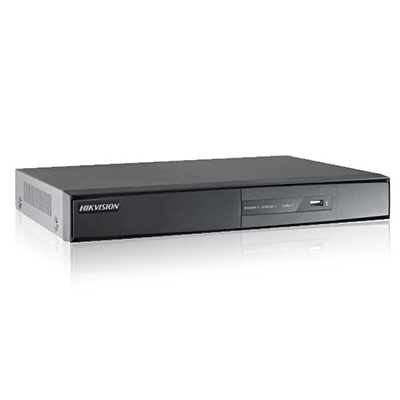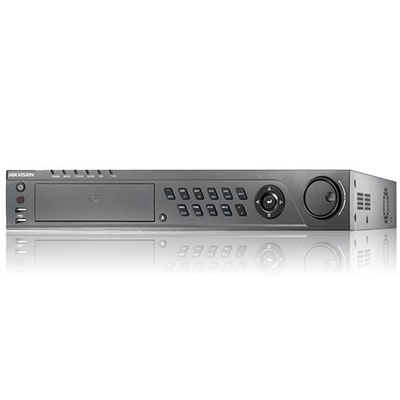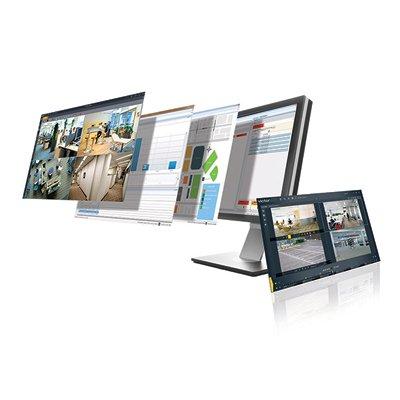CCTV Digital Video Recorders (DVRs) (1,732)
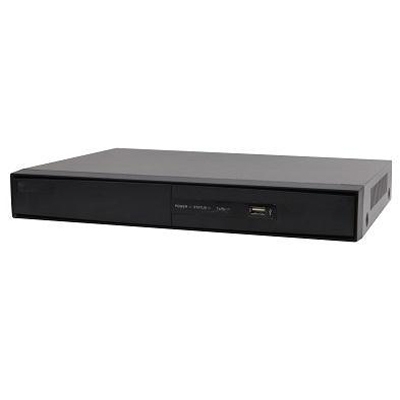
H.264 ,H.264+& Dual-stream video compression Support HD-TVI, AHD and analogue cameras with adaptive access Up to 3 MP resolution for recording of the first channel of DS-7204HQHI-F1/N, the first 2 channels of DS-7208HQHI-F1/N, and the first 4 channels of DS-7216HQHI-F1/N Support 1080P lite mode enabled to realise the real-time 1080P lite and 720P lite resolution Simultaneous HDMI/VGA output at up to 1920 × 1080 resolution for DS-7204/7208HQHI-F1/N and 4K (3840 × 2160) resolution for HDMI output of DS-7216HQHI-F1/N Long transmission distance over coax cable Playback at up to 256X speed.
Add to Compare
H.264 ,H.264+& Dual-stream video compression Support HD-TVI, IPC,AHD and analog cameras with adaptive access Support 1080P lite mode enabled to realize the real-time 1080P lite and 720P lite resolution HDMI and VGA output at up to 1920×1080P resolution, Long transmission distance over coax cable
Add to Compare
H.264 & dual-stream video compression Up to WD1(PAL:960×576,NTSC:960×480) resolution real-time recording Simultaneous VGA and CVBS outputs Alarm for video loss, motion detection, tampering and abnormal signal Embedded WEB server for remote access
Add to Compare
H.265+/H.265 dual-stream video compression Supports HDCVI/AHD/TVI/CVBS/IP video inputs Max 12/24 channels IP camera inputs, each channel up to 6MP; Max 48/96Mbps Incoming Bandwidth Smart Search and Intelligent Video System
Add to Compare
H.265+/H.265 dual-stream video compression Supports HDCVI/AHD/TVI/CVBS/IP video inputs Max 12/24 channels IP camera inputs, each channel up to 6MP; Max 48/96Mbps Incoming Bandwidth Smart Search and Intelligent Video System
Add to Compare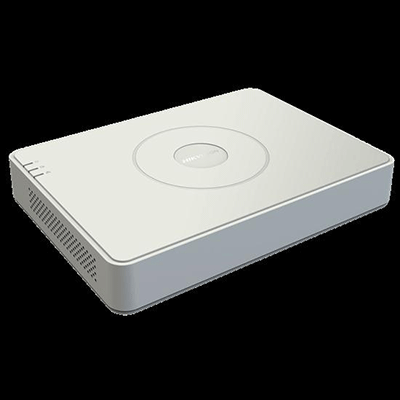
H.264 & dual-stream video compression Up to WD1(PAL:960×576,NTSC:960×480) resolution real-time recording Simultaneous VGA and CVBS outputs Alarm for video loss, motion detection, tampering and abnormal signal Embedded WEB server for remote access Mobile view on 3G/Wifi enabled device (iPhone, Android)
Add to Compare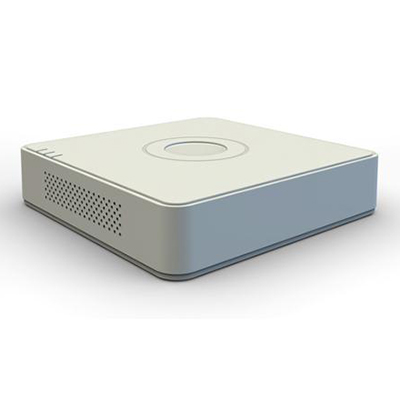
H.264, H.264+ & Dual-stream video compression Supports HD-TVI, AHD and analogue cameras with adaptive access Support 1080P lite mode enabled to realise the real-time 1080P lite and 720P lite resolution Simultaneous HDMI/VGA output at up to 1920 × 1080 resolution Long transmission distance over coax cable Playback at up to 256X speed
Add to Compare
Deep learning-based motion detection 2.0 for all analogue channels Deep learning-based perimeter protection H.265 Pro+/H.265 Pro/H.265/H.264+/H.264 video compression HDTVI/AHD/CVI/CVBS/IP video inputs Audio via coaxial cable Up to 40-ch IP camera inputs (up to 8 MP) Up to 10 TB capacity per HDD Encoding up to 1080p @ 15 fps 2 SATA interfaces
Add to Compare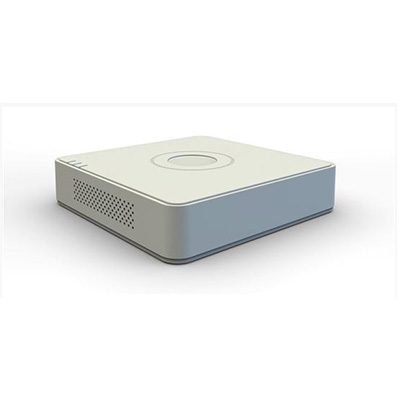
Connectable to HDTVI, AHD and analog cameras Long distance transmission over UTP and coaxial cable with max. 1200m for the 720p and max. 800m for the 1080p HDTVI signal One-key enable H.264+ compression to improve encoding efficiency by up to 50% and reduce data storage costs Up to 3 MP resolution for recording of the first channel of DS-7104HQHI-F1/N, the first 2 channels of DS-7108HQHI-F1/N, and the first 4 channels of DS-7116HQHI-F1/N Supports real-time 1080p lite and when enabled, the image effect is similar with 1080p
Add to Compare
H.264 & Dual-stream video compression Support HD-TVI/analogue/IP camera triple hybrid Full channel@1080P resolution real-time recording HDMI and VGA output at up to 1920×1080P resolution Long transmission distance over coax cable
Add to Compare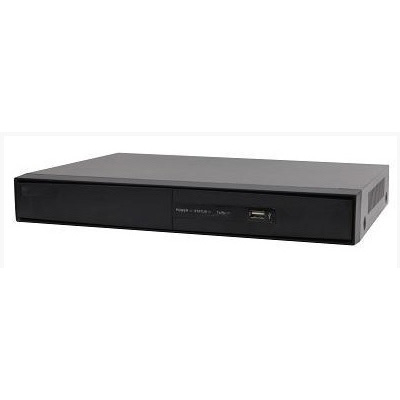
Connectable to HDTVI, AHD and analog cameras Up to 2-ch 1080p IP cameras input for DS-7208/7216HQHI-F1/N Long distance transmission over UTP and coaxial cable with max. 1200m for the 720p and max. 800m for the 1080p HDTVI signal One-key enable H.264+ compression to improve encoding efficiency by up to 50% and reduce data storage costs Supports real-time 1080p lite and when enabled, the image effect is similar with 1080p
Add to Compare
H.264, H.264+ & Dual-stream video compression Support both HD-TVI/analogue and AHD cameras with adaptive access Full channel recording at up to 1080P lite resolution HDMI and VGA output at up to 1920×1080P resolution Long transmission distance over coax cable Supports4-ch synchronous playback at 720P resolution
Add to Compare
H.264, H.264+ & Dual-stream video compression Supports HD-TVI, AHD and analogue cameras with adaptive access Support 1080P lite mode enabled to realise the real-time 1080P lite and 720P lite resolution Simultaneous HDMI/VGA output at up to 1920 × 1080 resolution for DS-7204/7208HQHI-F1/N Long transmission distance over coax cable Playback at up to 256X speed
Add to Compare
H.264 video compression Supports HDCVI/AHD/TVI/CVBS/IP video inputs Max 5/10 channels IP camera inputs, each channel up to 2MP/5MP; Max 20/40Mbps Incoming Bandwidth Long transmission distance over coax cable Supports 1 SATA HDD, up to 6TB
Add to Compare
Hikvision DS-7204HVI-SV/A is a 4 channel digital video recorder that features: H.264 video compression CIF resolution real-time recording Up to WD1(960*576) resolution recording HDMI and VGA output at up to 1920×1080P resolution Dual-stream Up to 4-ch synchronous playback NTP, SMTP, NFS, UPnP and iSCSI protocols
Add to Compare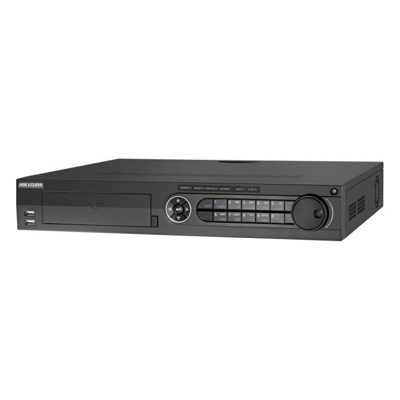
Connectable to network cameras Simultaneous HDMI and VGA outputs at up to 1920×1080P resolution 4 SATA interfaces and 1 eSATA interface for record and backup 1 self-adaptive 10M/100M/1000M network interface Instant playback for assigned camera during multi-channel live view
Add to Compare
Hikvision DS-7216HVI-SV is a 16-channel 960H digital video recorder with CIF resolution real-time recording. It has HDMI and VGA output as well as NTP, SMTP, NFS, UPnP and iSCSI protocols. It also has LAN network interface and RS-485 serial interface.
Add to Compare
Connectable to HDTVI, AHD and analog cameras Up to 2-ch 1080p IP cameras input Long distance transmission over UTP and coaxial cable One-key enable H.264+ compression to improve encoding efficiency by up to 50% and reduce data storage costs Full channel recording at up to 720p resolution One SATA interface (up to 6 TB capacity per HDD)
Add to Compare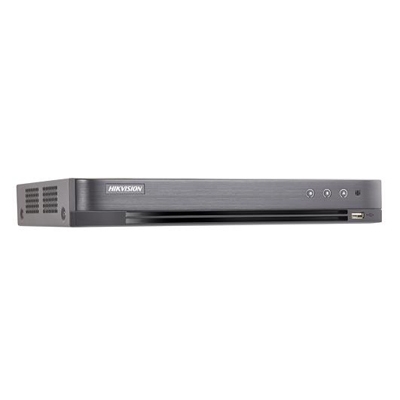
H.265+/H.265/H.264+/H.264 encoding for the main stream, and H.265/H.264 for the sub-stream of analogue cameras Self-adaptive HDTVI/HDCVI/AHD/CVBS signal input Connectable to H.265+/H.265/H.264+/H.264 IP cameras Up to 3 MP resolution for recording HDMI output at up to 4K (3840 × 2160) resolution for DS-7216HQHI-K1 Long distance transmission over UTP and coaxial cable
Add to Compare
H.265 Pro+/H.265 Pro/H.265/H.264+/H.264 video compression HDTVI/AHD/CVI/CVBS/IP video inputs Audio via coaxial cable Up to 10-ch IP camera inputs (up to 5 MP) Max. 1200 m for 720p HDTVI signal Support 1080p Lite of all channels. When 1080p Lite is on, the image effect is similar with 1080p 1 SATA interface (up to 4 TB capacity per HDD) Smart search for efficient playback Hik-Connect & DDNS (Dynamic Domain Name System) for easy network management 64/72 Mbps total bandwidth
Add to Compare
H.265+/H.265 dual-stream video compression Supports HDCVI/AHD/TVI/CVBS/IP video inputs Max 12/24 channels IP camera inputs, each channel up to 6/8MP; Max 48/96Mbps incoming bandwidth 4/8 channels support Tripwire & Intrusion; First 2 channels support Object Abandoned & Missing DH-XVR5416L-X supports HDMI2 for spot output
Add to Compare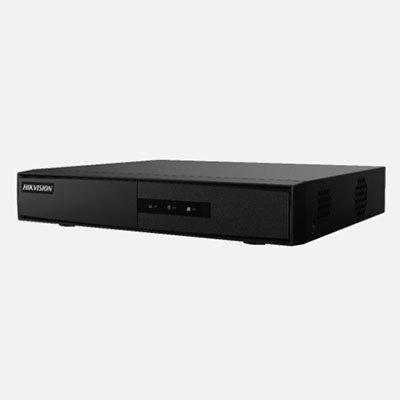
H.265 Pro+/H.265 Pro/H.265/H.264+/H.264 video compression HDTVI/AHD/CVI/CVBS/IP video inputs Audio via coaxial cable Max 10-ch IP camera inputs (up to 5 MP) Max. 1200 m for 720p HDTVI signal Support 1080p Lite of all channels. When 1080p Lite is on, the image effect is similar with 1080p 1 SATA interface (up to 4 TB capacity per HDD) Smart search for efficient playback Hik-Connect & DDNS (Dynamic Domain Name System) for easy network management
Add to Compare
Deep learning-based motion detection 2.0 for all analogue channels Deep learning-based perimeter protection H.265 Pro+/H.265 Pro/H.265/H.264+/H.264 video compression HDTVI/AHD/CVI/CVBS/IP video inputs Audio via coaxial cable Up to 32-ch IP camera inputs (up to 8 MP) Up to 10 TB capacity per HDD Recording at up to 8 MP resolution 2 SATA interfaces Smart search for efficient playback Support the third party cloud storage Support multiple VCA (Video Content Analytics) events for both analogue and smart IP cameras Hik-Connect & DDNS (Dynamic Domain Name System) for easy network management Output bandwidth limit configurable
Add to Compare
H.264 ,H.264+& Dual-stream video compression Support HD-TVI, AHD and analogue cameras with adaptive access Support 1080P lite mode enabled to realize the real-time1080P lite and 720P lite resolution HDMI and VGA output at up to 1920×1080P resolution, Long transmission distance over coax cable Up to 4/8-ch synchronous playback at 1080p resolution playback at up to 256X speed.
Add to Compare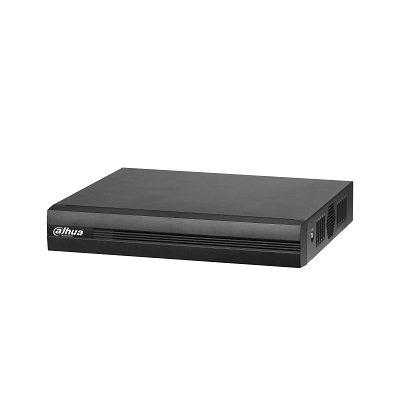
H.265+/H.265 dual-stream video compression Supports Full-channel AI-Coding Supports HDCVI/AHD/TVI/CVBS/IP video inputs Max 18 channels IP camera inputs, each channel up to 6MP; Max 64 Mbps Incoming Bandwidth Long transmission distance over coax cable
Add to Compare
Deep learning-based motion detection 2.0 for all analogue channels Deep learning-based perimeter protection H.265 Pro+/H.265 Pro/H.265/H.264+/H.264 video compression HDTVI/AHD/CVI/CVBS/IP video inputs Audio via coaxial cable Up to 24-ch IP camera inputs (up to 6 MP) Up to 10 TB capacity per HDD Full channel recording at up to 1080p resolution Smart search for efficient playback Support the third party cloud storage Support multiple VCA (Video Content Analytics) events for both analogue and smart IP cameras Hik-Connect & DDNS (Dynamic Domain Name System) for easy network management Output bandwidth limit configurable
Add to Compare
H.264 & dual-stream video compression Up to WD1(PAL:960×576,NTSC:960×480) resolution real-time recording Simultaneous VGA and CVBS outputs Alarm for video loss, motion detection, tampering and abnormal signal Embedded WEB server for remote access
Add to Compare
Recording high-quality video continuously for long periods of time has always been a challenge for the security industry. Hikvision’s new range of eDVRs uses Scene Adaptive Bitrate Control technology to maximize storage efficiency and capture incidents in crystal-clear detail. Video has traditionally been a storage-intensive medium. Conventional security video applications record video at a constant bitrate even at night or when nothing much is happening. That means that a lot of storage is wasted, without delivering much value for customers. Two attempts at making video storage more effective The security industry has come up with various technologies and approaches to try to make video storage as efficient as possible. These include: • Variable bitrate technology This looks at the scene and changes the bitrate according to the complexity – and the activity level. The plus point here is that the bitrate increases, and the image quality improves, when there’s actually something happening. The bad news is that storage requirements are totally unpredictable, giving operators no indication of how long footage will be stored before it is eliminated and ‘overwritten’. • Smart coding with a constant bitrate This uses low, but constant, image compression to increase predictability of storage and to maximise storage efficiency. However, the bitrate is always the same, and the quality may not be good enough to take effective action in the event of an incident. Overcoming the challenges with Hikvision Instead of these legacy storage approaches, Hikvision is using an innovative technology called Scene Adaptive Bitrate Control to boost storage efficiency. This technology is embedded in all of Hikvision’s new eDVRs, which use eSDD storage instead of HDD drives. To make storage as efficient as possible, the Hikvision eDVRs use variable bitrates – with more storage allocated temporarily for complex scenes. When there is nothing going on in the camera view, the bitrate is reduced dramatically, saving storage resources and extending the continuous recording time of the device. To ensure that the storage time is as predictable as possible, the eDVRs look at bitrate trends over the previous hours and days and allocates storage resources accordingly, in a properly measured way. This means that the device uses a variable bitrate in the short term, depending on the changing security scene, but a fixed code rate is used over the longer term to ensure video images are stored for the required timeframe before they are overwritten (typically for at least 2 weeks of continual recording). Furthermore, thanks to its exceptional storage efficiency, a 1TB eDVR can provide up to 8 weeks of storage, easily meeting customers’ storage requirements. A 1TB 4 channel model (iDS-E04HQHI-D) can store up to 4 weeks of continuously recorded footage by all channels in 1080P, while a DS-E04HGHI-E model supports up to 8 weeks of continuous recording in 1080p lite (960x1080 resolution). As an additional benefit, the Hikvision eDVRs offer highly stable image compression with good quality for security applications, ensuring that all incidents are captured in crystal clear detail. Real-world test results from an industrial park installation To showcase the storage efficiency of our eDVRs, we conducted a live test at an industrial park with a 2MP eDVR model (DS-E04HQHI-B). The eDVR received four video feeds, each with a resolution of 1080 pixels and a frame rate of 15 per second. During the test, we recorded complex scenes of our manufacturing facilities, including roadways, interior areas, entrance, and exit points. The recording bitrate automatically adjusted throughout the day and night based on the traffic and level of activity in all the covered zones. In spite of the variable bitrate, the Hikvision eDVR was able to allocate its 439 GB of total available storage in a very stable way. In the test, the device was able to store over 13 days of continuous recording, using around 33.7 GB. The storage utilization of the eDVR was highly stable and totally predictable, despite the varying bitrate during peak times at the manufacturing facilities.
Add to Compare
Deep learning-based motion detection 2.0 for all analogue channels Deep learning-based perimeter protection H.265 Pro+/H.265 Pro/H.265/H.264+/H.264 video compression HDTVI/AHD/CVI/CVBS/IP video inputs Audio via coaxial cable Up to 12-ch IP camera inputs (up to 6 MP) Up to 10 TB capacity per HDD Full channel recording at up to 1080p resolution Smart search for efficient playback Support the third party cloud storage Support multiple VCA (Video Content Analytics) events for both analogue and smart IP cameras Hik-Connect & DDNS (Dynamic Domain Name System) for easy network management Output bandwidth limit configurable
Add to Compare
H.265 Pro+/H.265 Pro/H.265/H.264+/H.264 video compression HDTVI/AHD/CVI/CVBS/IP video inputs Audio via coaxial cable Up to 5-ch IP camera inputs (up to 1080p) Max. 1200 m for 720p HDTVI signal Support 1080p Lite of all channels. When 1080p Lite is on, the image effect is similar with 1080p 1 SATA interface (up to 4 TB capacity per HDD) Smart search for efficient playback Hik-Connect & DDNS (Dynamic Domain Name System) for easy network management 64/72 Mbps total bandwidth
Add to Compare
H.265 Pro+/H.265 Pro/H.265/H.264+/H.264 video compression HDTVI/AHD/CVI/CVBS/IP video inputs Audio via coaxial cable Up to 12-ch IP camera inputs (up to 6 MP) Up to 6 TB capacity per HDD Full channel recording at up to 4 MP lite resolution Smart search for efficient playback Hik-Connect & DDNS (Dynamic Domain Name System) for easy network management Output bandwidth limit configurable
Add to Compare
Connectable to HDTVI, AHD and analog cameras Up to 2-ch 4 MP IP cameras input Long distance transmission over UTP and coaxial cable Full channel recording at up to 3 MP resolution Independent CVBS output improves compatibility at the most possibility HDD quota and group management for flexible recording storage
Add to Comparevictor video management system eliminates manual case management to save time
American Dynamics Management Solution
American Dynamics VideoEdge Network Video Recorder Software

